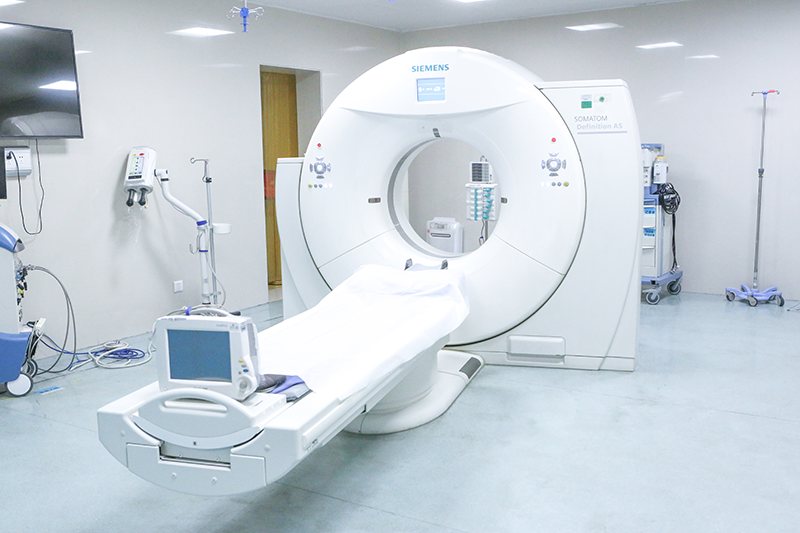Which Hospital in China Is Best for Lung Cancer Treatment?
Lung cancer, the leading cause of cancer incidence and mortality in China, is a highly complex and challenging disease to treat. It requires not only advanced medical technology but also strong multidisciplinary collaboration and extensive clinical experience. While many top hospitals in China have established outstanding expertise in lung cancer diagnosis and treatment, it is difficult to simply define which one is “the best.” Each hospital has its own strengths in specific areas such as early screening, minimally invasive surgery, targeted therapy, and immunotherapy. Therefore, patients should choose the most suitable institution based on their individual condition and treatment needs. Below are several representative hospitals in China that hold significant influence in lung cancer treatment:

Guangzhou Fuda Cancer Hospita
Multidisciplinary Team (MDT):Experts from oncology surgery, medical oncology, radiotherapy, imaging, anesthesiology, and integrative medicine work together to design personalized treatment plans.
Minimally Invasive & Comprehensive Treatment,Argon-Helium Cryoablation:Iodine-125 Seed Implantation,Interventional Therapies (TACE, arterial infusion chemotherapy, etc.),Microwave Ablation, Radiofrequency Ablation,Combined with surgery, radiotherapy, targeted therapy, immunotherapy, and traditional Chinese medicine.
Cutting-edge International Technology:Among the first in China to adopt Argon-Helium Cryoablation.Integrates Western medicine with Traditional Chinese Medicine to improve survival rate and quality of life.
National Cancer Center / Cancer Hospital, Chinese Academy of Medical Sciences (CAMS)
Benchmark in thoracic oncology
As the core unit of the National Cancer Center, its Department of Thoracic Surgery is considered the birthplace of thoracic oncology in China and one of the key institutions in setting national lung cancer treatment standards.
•Full coverage of the disease course: From early detection with low-dose CT, to multidisciplinary treatment (MDT) for advanced stages, to palliative care and rehabilitation, the hospital provides comprehensive management across all stages of lung cancer.
•Expertise in complex cases: Particularly skilled in surgeries for locally advanced lung cancer, including resections involving major blood vessels or mediastinal invasion. Over 30% of its annual lung cancer surgeries are high-difficulty cases.
•Integration of research and clinical practice: As a hub for international multicenter clinical trials, the hospital provides patients with early access to novel targeted therapies and immunotherapies.
In the national specialty rankings by Fudan University, its thoracic surgery department has been ranked No.1 in China for 11 consecutive years, widely recognized as a benchmark for lung cancer care.
Shanghai Pulmonary Hospital
Leader in surgical volume and innovation
Shanghai Pulmonary Hospital is a National Clinical Key Specialty hospital with one of the world’s largest thoracic surgery centers.
•World-leading surgical volume: Over 15,000 thoracic surgeries annually, with lung cancer cases accounting for 60%. Its total surgical volume and proportion of complex procedures are among the highest worldwide.
•Pioneer in minimally invasive techniques: The hospital was among the first in China to perform thoracoscopic lung cancer surgery in 2000. Today, more than 90% of its surgeries are minimally invasive, with single-port thoracoscopy reaching high maturity—cutting recovery time by over 50% compared with traditional surgery.
•Strength in difficult cases: The hospital specializes in accurate diagnosis of pulmonary nodules (using AI-assisted imaging and 3D reconstruction) and individualized resection plans for multiple primary lung cancers, helping preserve lung function in early-stage patients.
Shanghai Chest Hospital
Forerunner in multidisciplinary lung cancer care
As one of China’s earliest specialist hospitals for thoracic diseases, it is well known for its multidisciplinary treatment (MDT) approach.
•Routine MDT clinics: Daily MDT consultations bring together thoracic surgeons, oncologists, radiation oncologists, radiologists, and pathologists to create individualized treatment plans for each patient, especially those with advanced disease.
•Advanced radiotherapy: Equipped with proton and heavy ion therapy and stereotactic body radiotherapy (SBRT), the hospital offers curative options for inoperable early-stage lung cancers with fewer side effects compared with surgery.
•Rapid clinical research translation: As a major base for new drug clinical trials in China, the hospital has contributed to the validation and approval of several domestic PD-1 inhibitors and third-generation EGFR targeted therapies.
Peking University People’s Hospital
Innovation hub for thoracoscopic techniques
Renowned for its minimally invasive surgical expertise, the hospital’s thoracic surgery department is led by Academician Wang Jun, a pioneer of thoracoscopic surgery in China.
•Original techniques recognized worldwide: The “Wang’s Technique” for lymph node dissection under thoracoscopy solved a long-standing technical challenge and has been incorporated into international lung cancer guidelines, now widely adopted across China.
•Integrated screening and early intervention: Through partnerships with physical examination centers, the hospital conducts large-scale low-dose CT screening, combined with AI risk assessment and dynamic follow-up of pulmonary nodules, enabling early detection and early treatment.
•International collaborations: Works with leading institutions such as Mayo Clinic (USA) and the National Cancer Center of Japan, conducting joint research and training. Its minimally invasive surgical training programs have already trained thousands of thoracic surgeons nationwide.
Choosing the Right Hospital: “Best” Means “Most Suitable”
While all of these hospitals are leaders in lung cancer treatment, the best choice depends on the patient’s specific needs:
•Early-stage patients prioritizing minimally invasive and rapid recovery may consider the First Affiliated Hospital of Guangzhou Medical University or Peking University People’s Hospital.
•Complex advanced cases or those wishing to participate in new drug trials may benefit more from CAMS Cancer Hospital or Shanghai Chest Hospital.
•Patients with respiratory comorbidities may find better support with the collaborative model at Guangzhou Medical University’s First Affiliated Hospital.
With the advancement of China’s hierarchical medical system, these top hospitals are increasingly connected with regional hospitals through telemedicine and referral networks, allowing patients to receive standardized treatment locally while still accessing guidance from top experts.
Ultimately, the “best” hospital is the one that can provide an individualized, precise treatment plan tailored to the patient’s condition, physical status, and therapeutic goals.